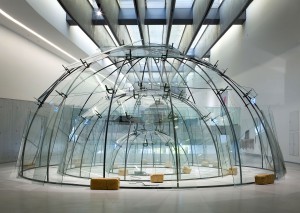opening hours
Monday closed
Tuesday to Sunday 11 am – 7 pm
EARLY TICKET OFFICE CLOSURES
Saturday and Sunday last entry at 5:30 pm
- full price € 15 at the box office - € 14 online
- reduced price € 12 at the box office - € 11 online
for young people aged between 18 and 25 (not yet turned 25);
for groups of 15 people or more; registered journalists with a valid ID card; La Galleria Nazionale, Museo Ebraico di Roma ticket holders; upon presentation of ID card or badge: Accademia Costume & Moda, Accademia Fotografica, Biblioteche di Roma, Centro Sperimentale di Cinematografia, Enel (for badge holder and accompanying person), FAI – Fondo Ambiente Italiano, Feltrinelli, IN/ARCH – Istituto Nazionale di Architettura, Sapienza Università di Roma, LAZIOcrea, Palazzo delle Esposizioni, Amici di Palazzo Strozzi, Accademia Nazionale di Santa Cecilia, Scuola Internazionale di Comics, Teatro Olimpico, Teatro dell’Opera di Roma, Teatro di Roma, Università degli Studi di Roma Tor Vergata, Youthcard - open € 18
valid for one year from the date of purchase
- free
minors under 18 years of age; disabled people requiring companion; EU Disability Card holders and accompanying person; MiC employees; European Union tour guides and tour guides, licensed (ref. Circular n.20/2016 DG-Museums); 1 teacher for every 10 students; ICOM members; AMACI members; journalists (who can prove their business activity); myMAXXI membership cardholders; European Union students and university researchers in Art and Architecture, public fine arts academies (AFAM registered) students and Temple University Rome Campus students from Tuesday to Friday (excluding holidays); IED – Istituto Europeo di Design professors, NABA – Nuova Accademia di Belle Arti professors, RUFA – Rome University of Fine Arts professors; upon presentation of ID card or badge – valid for two: Collezione Peggy Guggenheim a Venezia, Castello di Rivoli Museo d’Arte Contemporanea, Sotheby’s Preferred, MEP – Maison Européenne de la Photographie; on your birthday presenting an identity document
Collection
MAXXI’s Collection of Art and Architecture represents the founding element of the museum and defines its identity. Since October 2015, it has been on display with different arrangements of works.

other upcoming events
6 Aug 2024 > 15 Sep 2024
videogalleryRoma calling
7 Sep 2024 ore 18:00
cinemaRyuichi Sakamoto: Opusby Neo Sora
8 Sep 2024 ore 16:30
MAXXI with the FamilyEnvironments to explore!
10 Sep 2024 ore 18:00
talkStorie dalla terracinque fotografi per quattro continenti
11 Sep 2024 ore 18:00
talkEsistere come donna: Louise Bourgeois e l’Italia
12 Sep 2024 ore 17:00
MAXXIperTUTTIParola al corpotactile lab



















































Carlo Scarpa hall – € 5
carnet for four meetings € 10
10 individual seats free and reserved for myMAXXI cardholders by writing to mymaxxi@fondazionemaxxi.it, by the day before the event
Four meetings to know Ponti’s multi-faceted activities, which include architecture, design, teaching, publishing, decoration, and scenography.
The programme intends to flank the exhibition in introducing and bringing the audience closer to Ponti’s multi-faceted activities: architecture and design, teaching and publishing, decoration and scenography; a legacy that has no equal in terms of versatility, flair, and commitment. A five-lesson long path designed to outline the professional profile of a person who actively participated in the re-birth of post-war Italian design.
Gio Ponti and the city
with Giorgio Ciucci
Theories or urban plans do not filter Ponti’s relationship with the city. More simply, since the 1930s, he observes the city, in particular, Milan, through its building components. On the one hand, the relationship between the houses (the “interclassist” domus, the same title given to the magazine founded in 1928) and the street; on the other, the buildings, in the context of massive urban spaces such as the Montecatini and Ferrania buildings or the residential building in S. Babila. The synthesis point between 1927 and 1940 was the design for a large residential area, “Spina Verde” at Scalo Sempione, which was proposed again after the war as “Il Fiume Verde”.
Giorgio Ciucci, former Secretary-General of the National Academy of San Luca, has published books and edited volumes on the architecture and city of Rome from the fifteenth to the twentieth century and on Italian, European, and American architecture of the twentieth century.